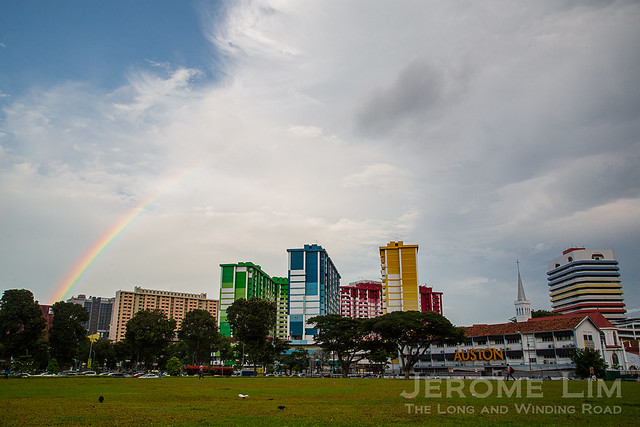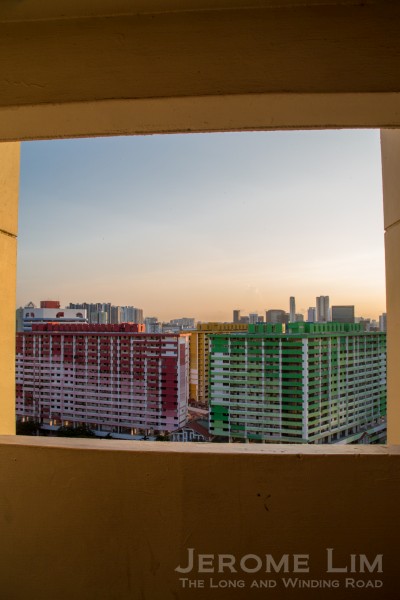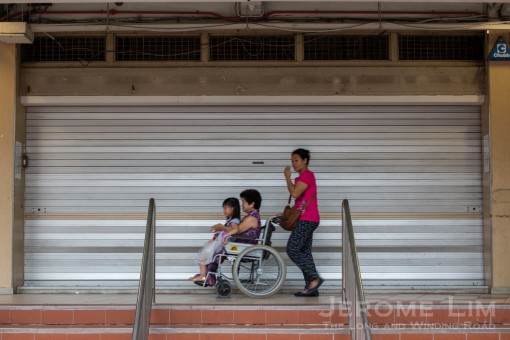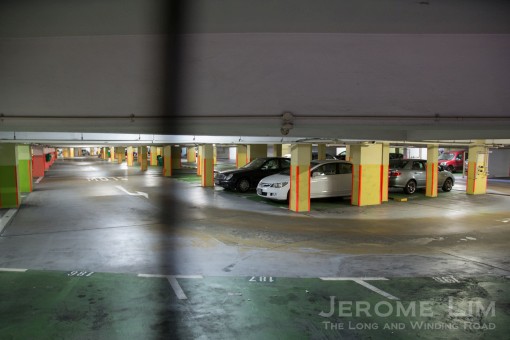We seemed to have said too many goodbyes in the year we have just left behind; goodbyes to those who coloured the world, goodbyes to political certainty, and in Singapore, goodbyes- once again – to too many bits of what makes our city-state unique. The year we have just welcomed, brings the end for many of the places we have said goodbye to, either through their complete erasure or through alteration. Two, Rochor Centre and the Ellison Building, both of which are affected by the construction of the North-South expressway due to commence this year, have received more than a fair share of attention. The former will be completely demolished as it stands in the way of exit and entry points of the southern end of the expressway, while the latter, a conserved structure, will lose some of its original façade. While there is an intention to have its lost face rebuilt, the news was met with quite a fair bit of displeasure, prompting an effort to have the extent of the façade affected minimised.

The “Rainbow Flats”, or Rochor Centre, will be demolished this year for the construction of the North-South expressway.
The expressway will be built overground at its northern end. The impact this will have may not in the loss of buildings or parts of them, but the much altered vistas the parts the viaduct is being built over would have. One area in which this would be painfully obvious will be in Sembawang Road between Mandai Avenue and Khatib Camp. Taking a path through a landscape recalling a countryside we have largely discarded, the road and the pleasing vistas it has long provided, will surely be missed once the expressway is built. My acquaintance with the road goes back to the early 1970s when as a schoolboy, I would find myself bused down the road, to support my school’s football team playing in the north zone primary schools finals at Sembawang School. The road’s charm hasn’t changed very much since its more rural days, despite its subsequent widening and the building of Yishun New Town and Khatib Camp just down the road.

A beautiful stretch of Sembawang Road – near its 11th milestone, recalls a rural past. A viaduct for the North-South expressway, will give it a very different and a much more urban feel.

The road is set against a charming landscape that recalls its days as part of the huge Nee Soon plantation. The former plantation’s Assistant Manager’s residence – still stands prominently atop one of the areas’s high points.
An area affected by the expressway that has already lost its charm is Toa Payoh Rise. I often enjoyed walks along the quiet and well shaded tree-lined road in more youthful days when the air of calm it provided was supplemented by the chorus of its tree lizards. The then much narrower road, an access point to Toa Payoh Hospital, has seen much of its magic taken away. Associated also with institutions for the visually handicapped, it has since been given a completely different feel with its upgrade into a main access path in and out of Toa Payoh and the building of a Circle Line MRT station, Caldecott. Several structures of the past can still be found such as the former Marymount Convent complex and four low-rise blocks of flats that served as quarters for hospital staff. The former convent buildings and two of the four blocks of flats are however set to disappear just so our world could be kept moving.

Flats at Toa Payoh Rise – two will be demolished for the North-South expressway to be built.

The Marymount Convent complex.
At the other end of Thomson Road, there are also two reminders of more youthful times that are also set to make a partial disappearance. Here, the expressway’s tunnel will burrow through soil once intended to provide eternal rest – that of the former New or Bukit Timah Cemetery – already disturbed by the exhumation of the cemetery in the 1970s. The tunnel will also swallow up several units from a delightful collection of old houses at Kampong Java and Halifax Roads. Built around the 1930s as municipal quarters, these are of two designs and have very much been a feature of the area. The area was where I attended kindergarten (at Cambridge Road) and also primary school (at Essex Road). While the demolition would involve a few units close to the side of the Central Expressway, it will have the impact of further reducing the area’s already eroded charm.

Former municipal quarters at Kampong Java Road that will make way for the expressway.

Former municipal quarters at Halifax Road, several of which will also fall victim to the North South expressway.
Two other major road transport projects – involving the MRT – also adds to the destruction brought on by the need to keep our world moving. One, the final phase of the Circle Line, has seen part of the Singapore Polytechnic first campus demolished and the levelling of what had been left of the very historic Mount Palmer. Another big change the project will bring is to the former Tanjong Pagar Railway Station. The line will run under the former station with an MRT station, Cantonment, built under its platforms. This will see the well-loved National Monument closed to the public for a period of nine years during which time it will acquire an entirely different feel. One of the MRT station exits will bring commuters up to the former station’s platforms and into the former station building, which will by the time it reopens, may feature a mix of retail and food and beverage outlets.

A last Christmas at Tanjong Pagar, before a lengthy closure during which it will be changed forever.
Not everything however, is going due to the need to keep us mobile, as is the case for what is left of Old Kallang Airport Estate or Dakota Crescent – as it is now commonly referred to. The well-loved neighbourhood is a a last remnant of an estate built by the Singapore Improvement Trust (SIT) – the predecessor to the HDB, that features the first attempts at high-rise public housing blocks. Built at the end of the 1950s, parts of the estate has already been lost to redevelopment. The part of it that is still left features four block designs arranged around two spacious courtyards and a playground introduced in the 1970s. Some of the blocks were designed to also include units intended for commercial and artisanal use – a feature of the SIT estates of the era. A group is currently seeking to have parts of the estate, which offers an insight into the public housing programme of the pre-HDB era, conserved, supported by the Member of Parliament for the area.

Dakota at the crossroads.

Will the estate and the last of the dove (playgrounds), like many of the SIT estates of the past, be discarded?
See also:
Some places that will be affected by the North-South Expressway
- Parting Glances: Rochor Centre in its Last Days
- Calling an End to One Cycle of Time for the Ellison Building
- A Search for a Lost Countryside
- A Forgotten Corner of Thomson Road
- Toa Payoh on the Rise
Some places that are affected by the Circle Line’s Final Phase
- Closing the Circle
- Parting Glances: Tanjong Pagar as It Will Never Again Be
- The first Singapore Polytechnic Campus
More Winds of Change:
- Critically Endangered
- Dakota at the Crossroads
- The Rail Corridor
- The Forgotten Star of MacTaggart Road
- The Last and a Soon to be Lost Countryside (possibly after 2020)
- The Last Forest Hill in Sembawang
- Losing its fizz: the third milestone without the former National Aerated Water Plant
















































































































